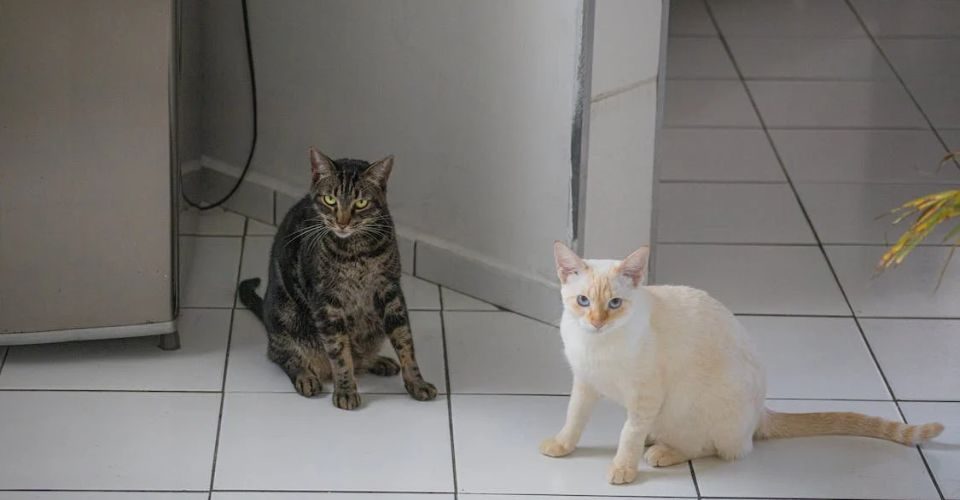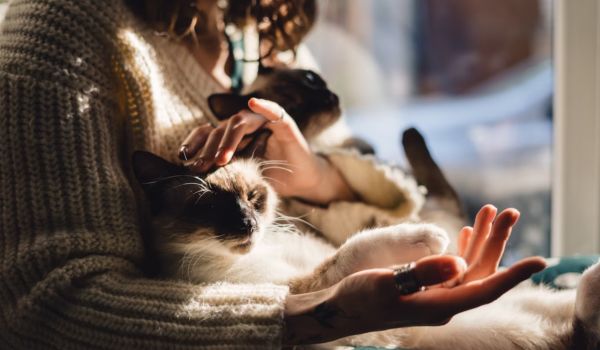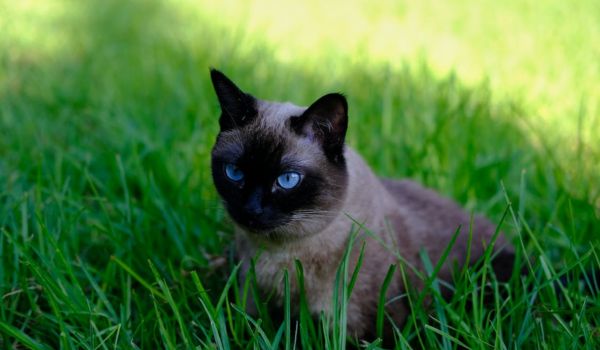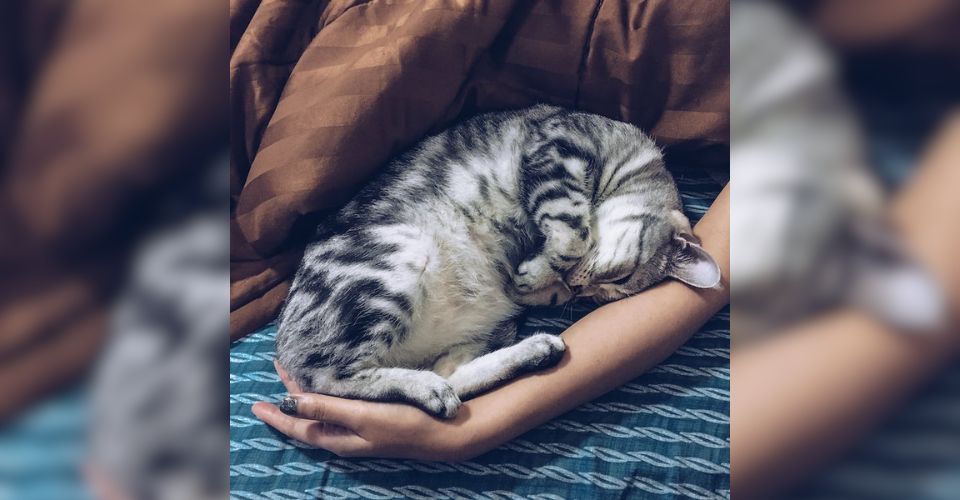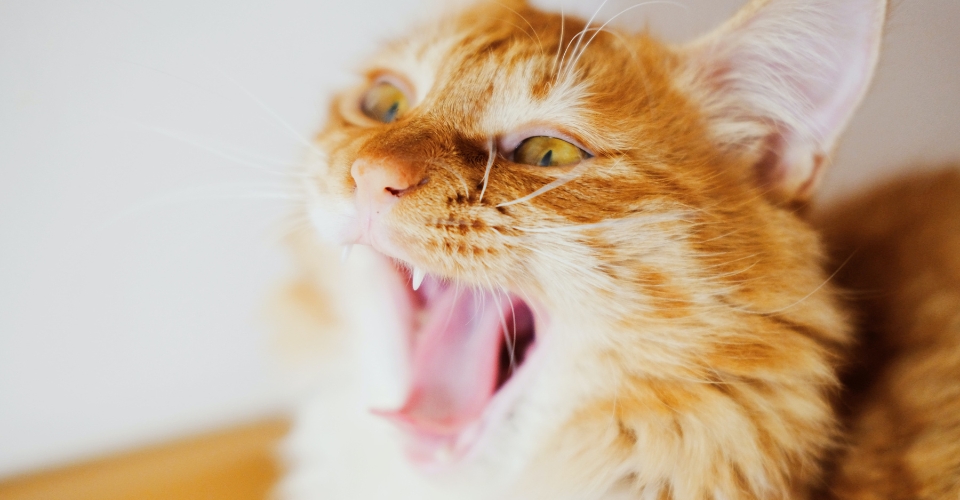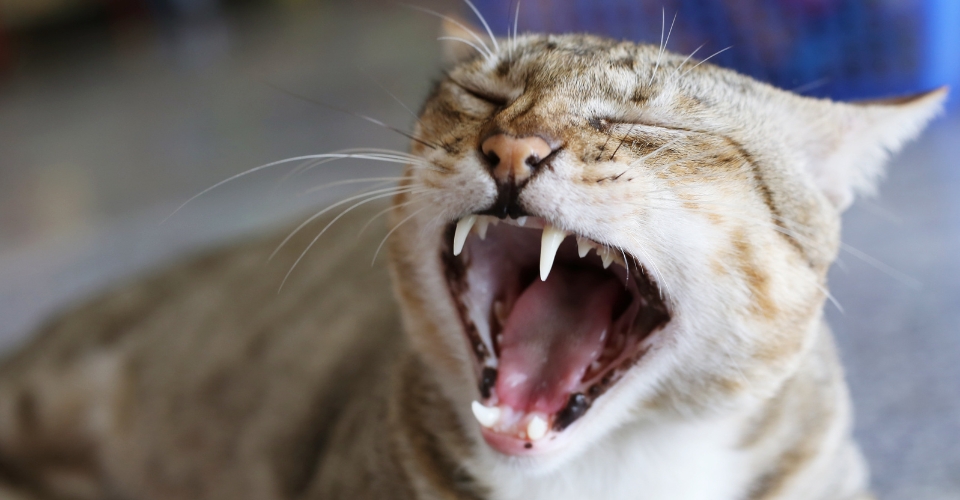They are elegant, captivating, and enchanting, but do Siamese cats get along with other cats? Sure, it is a question of concern for so many enthusiastic pet parents who would like to have more of these little munchkins at home. But it would be cruel to put two kitties in one home if one or both of them cannot stand the other. Siamese is an adorable cat who loves to be around people, but that is not the only score important. This is why we have put together this little piece to help you sort it out.
Do Siamese Cats Get Along With Other Cats?
Yes, Siamese cats are one of the most social, friendly, playful, and affectionate breeds of cats. Many refer to these cats as having the personality of a dog, all thanks to their gregarious and outgoing personality. They enjoy the presence of other cats and take them up as their playmates. Many experts suggest getting two Siamese cats together to keep them entertained and occupied.
However, this is not your only choice; you may choose from a variety of breeds compatible with these cats. Some of the options include Birman, Persian, Abyssinian, Maine Coon, British Shorthair, and Siberian cats. Prepare by creating separate spaces for the two cats and letting each of them have their respective territories.
Then follow a series of successive introductory steps, starting from letting them smell each other to meeting from behind a pet gate, brief face-to-face meet-ups, and then longer interactions. Finally, they are going to be accepting of each other and comfortable in the presence of each other.
Why Do Siamese Cats Get Along With Other Cats
So, you made it past our brief guide on the Siamese’s ability to go along with others of its species. Great. It is now time to get to the nuances. Why on earth would an animal as territorial as a cat agree to be pals with another cat to the point where they share the territory? Seems a bit sketchy, does not it?
Siamese Cats Are Social
Well, first of all, these are socialites of the cat species. They like going out and hanging out with others. They do not discriminate against whom they want to be friends with, be it their loving humans, animals of other species, or fellow cats. There is only one condition to the friendship, the other party should be friendly and willing to commit to the bond.
Siamese Cats Are Affectionate
These cats have one major advantage that helps them settle in so quickly in different environments: their capacity to love. These warm and affectionate beings shower their family and friends with loads of attention, companionship, and affection.
Siamese Cats Are Playful
The kitties are not just loving and friendly, but they also love to play. Siamese is just one of the few high-energy cat breeds. They love to explore their surroundings, climb on trees (or bookshelves), get onto the window perch, and gaze outside to amuse themselves.
Siamese like their playtime, and what better way to enjoy it than with another play buddy? It is one factor that decides whether or not their kitty friends could be compatible with them.
Siamese Cats Crave Attention
All the little gimmicks, vocalizations, and inquiries are not for nothing. They have truckloads of affection to give and want the same in return. Siamese cats crave attention to the point of being needy. The primary reason busy people are advised against getting Siamese cats is that they have some serious emotional needs.
The geezers need someone that can match their energy and return their affections in the same coin. And for this singular reason, it is suggested to bring two Siamese kittens into your home better than one. Still, at a growing age, they would be in an even better position to connect with the perfect partners in crime.
Breeds Siamese Cats Get Along Well With
Now that we understand better that the Siamese thrive in the presence of other cats, it is a good time to identify the cat breeds that will make a perfect companion for your Siamese. You see, they are friendly and can enjoy the company of other breeds, but that is only one part of the equation. You still need the other breed to be just as accepting, to say the least.
- Siamese: This one is a no-brainer. A breed that enjoys the company of other cats is likely to do best with one of its own. Admittedly each individual is different and has a personality of their own, but generally speaking, these cats do a good job of keeping each other entertained.
- Birman: Having the Siamese in its ancestry, Birman shares a lot of personality traits with its predecessor. Thankfully, the sweet nature, sociable personality, affection, and capacity for befriending other cats are all parts of this fluffy cat too.
- Abyssinian: Sharp looks and inexhaustible curiosity are mere covers for the sweet and loving Abyssinian. This breed demands attention and, thanks to its jovial personality, would be happy to receive and reciprocate it to fellow kitties.
- British Shorthair: The dignified British Shorthair is another wonderful match for a household with Siamese. Not your typical cuddly lap cat, it is still fiercely devoted to its family, moderately active, and tolerant of kids and other cats.
- Maine Coon: The large, furry giant of a cat known as Maine Coon is gentle and sweet. A far cry from the needy type, it is a rather independent breed. Yet its sweet disposition, gregarious personality, and tolerance make it a good fit to coexist with a Siamese.
- Persian: Hands down the most popular pedigreed cat, the laid-back and peculiar Persian cat can also get along with the Siamese cat. With a lady’s fine tastes and personality, this breed may not be as active as the Siamese, but its short bursts of energy and placid persona will keep our meezer entertained.
- Siberian: Like other thick-furred cats, the only concern for adding a Siberian to a home with a Siamese could be the weather conditions. Otherwise, these large, nimble-footed, intelligent, and energetic cats would be amazing kitty buddies for your Siamese.
How to Introduce Your Siamese to a New Cat?
Now the key to keeping multiple pets in the house, irrespective of their breed and species, is a proper introduction. Because despite their outgoing nature, the Siamese are still cats who are protective of their family and territory.
Not to mention they are also very sensitive. Leave them out, and it might stress them out, sending them down a road of erratic behavior and a depressed mind. So, better follow a proper introduction plan with persistence and see everything work out seamlessly.
Get Two Siamese Together
One of the easiest things to do when trying to get multiple cats in a home is to get them together. Provided they are compatible with each other, it should be easier for them to accept each other and share the home and family. Also, going through the housebreaking together could be a great bonding exercise.
Assign Separate Spaces
Begin by assigning separate spaces to both the existing and new kitty. That way, each gets its territory and one-on-one time with its human family without having to deal with the other, hence no jealousy. Remember to change your clothing and wash your hands between your interactions with two cats so as not to let them smell each other.
Cats are territorial and mark their territory by leaving their scent on surfaces and individuals. Smelling another cat on you can antagonize them. Also, ensure to provide all the necessary items like food and water bowls, litter boxes, and cat toys in their respective space.
Let Them Smell Each Other
Cats recognize their family with their smell. Once you have successfully settled the new cat in the house, it is time to let them smell each other. You can do so by placing their beds in the other’s space. Or putting their toys or other daily-use objects. The point is to let them sniff the other cat and get familiar with it. But do not overdo it, just leave it lying near them when they are playing and pick it back up after a while.
Gauge their reaction when they smell the other cat’s things. They might approach these things with suspicion and get back to them later. Once you notice they are ok with it, it is time to move to the next step.
Brief Introduction
Now that the cats are familiar with each other’s scents, it is time for a face-to-face meeting. Better safe than sorry—arrange the first meeting from behind a pet gate.
If you have a friend or adult family member to help, they may bring the new cat into the room and just play with it while you play with the other cat.
You just want these cats to notice each other and assess how they react. Make this introduction last for only a few minutes. Then take them back to their respective spaces. You will be able to assess their reactions and identify if it is ok to proceed with a few more brief meet-ups if everything goes well.
Longer Interaction & Peaceful Co-existence
Hopefully, the cats are used to seeing each other a few times a week. If you notice there are no signs of aggression, even better if there is curiosity, then it is a good time to let them play in the same area.
Keep these interactions brief as well, and make sure someone is monitoring them. Ready to tell them to back off if there are signs of aggression and remove the cat if one is distressed. But in all likelihood, if you have a breed that goes well with Siamese, things will go nicely.
Slowly, as you keep repeating these interactions, the kitties will come around and become comfortable with each other. In the best-case scenario, they might even befriend each other. Friends or not, if you notice them being peaceful with each other, you may increase the frequency of these interactions until, finally, they can both freely roam around the house.
Dealing With Aggression/Jealousy
While we do not expect any violence, it is better to expect the best and prepare for the worst. If your Siamese cat shows any signs of aggression or jealousy, you should take immediate measures to deal with negative emotions.
Signs of aggression may involve
- Scowling at the other cat.
- Chasing the other cat back to its designated space whenever it attempts to wander beyond.
- Not letting you pet the other cat.
Dealing with aggression
- First, protect the new cat by shutting your Siamese cat’s access to it.
- Use cues like “stop” or “leave that” to tell it to back off.
- Ignore the attempts not to let you pet the other cat and proceed with showing affection to the new kitty.
- Ignore the Siamese for showing bad behavior; it will sense what went wrong and understand that bad behavior will earn the loss of your attention.
It is obvious that whether or not things escalate to the point of aggression, they stem out of jealousy.
Signs of jealousy
- Always attempt to get first to you, not letting the other cat receive your affection.
- Behave aggressively towards you.
- Get abnormally clingy and attached to you.
- Show signs of anxiety like relieving outside the litter box or behaving withdrawn and upset.
Dealing with jealousy
To deal with jealousy, you need to take the same path as protecting the new cat, but you also need to meet the emotional needs of the existing cat. Some tips include;
- Ignore the Siamese when it tries to bully the other cat or prevent you from petting the other cat.
- When it starts behaving, shower it with love and affection to impress on it that it is not being replaced.
- Show both the cats that they are loved and cared for in their own spaces and not to instigate the other.
- Be present and attentive to both cats and maintain the separate spaces until they are ready to go over the reintroduction all over again.
Final Words: Do Siamese Cats Get Along With Other Cats?
Yes, Siamese cats are very social and affectionate and can get along with several other breeds of cats. Breeds like Persian, Birman, British Shorthair, and the Maine Coon make wonderful pet buddies for these cats. When introduced properly, these cats can move beyond mere tolerance for each other to get friendly.

